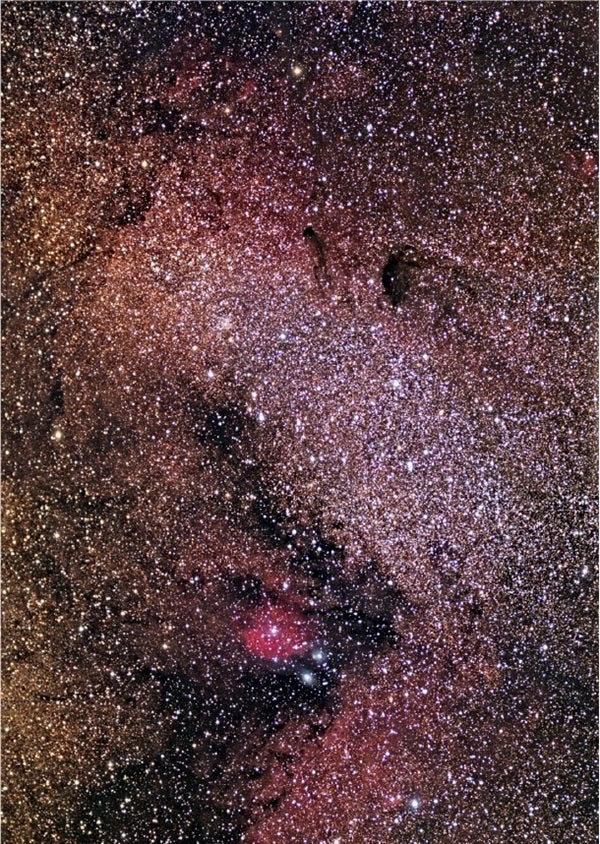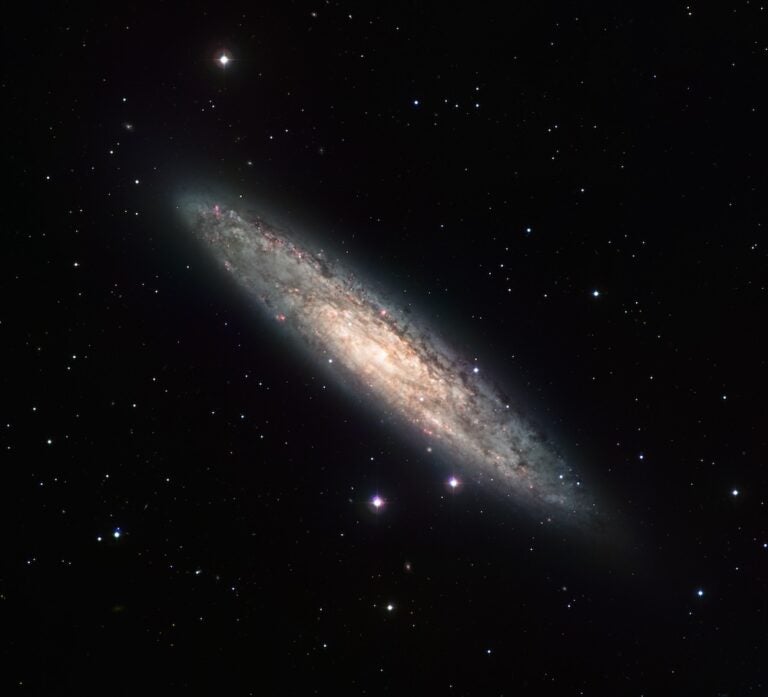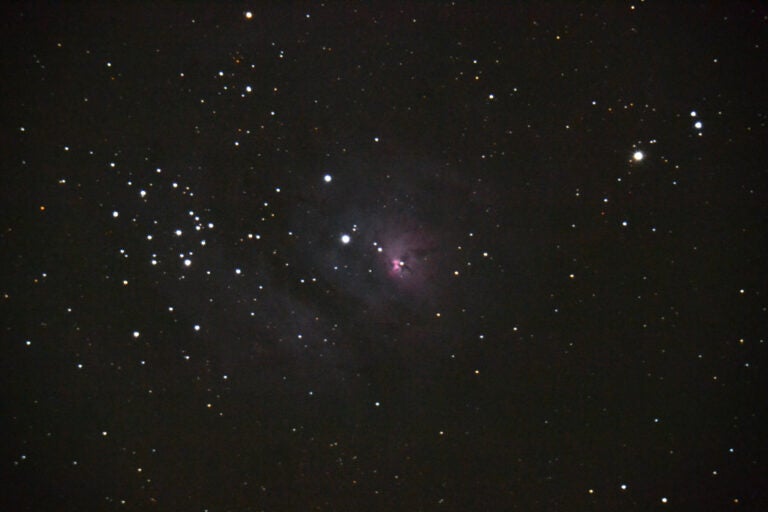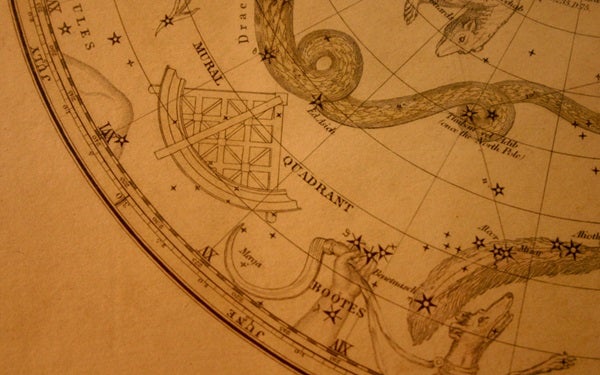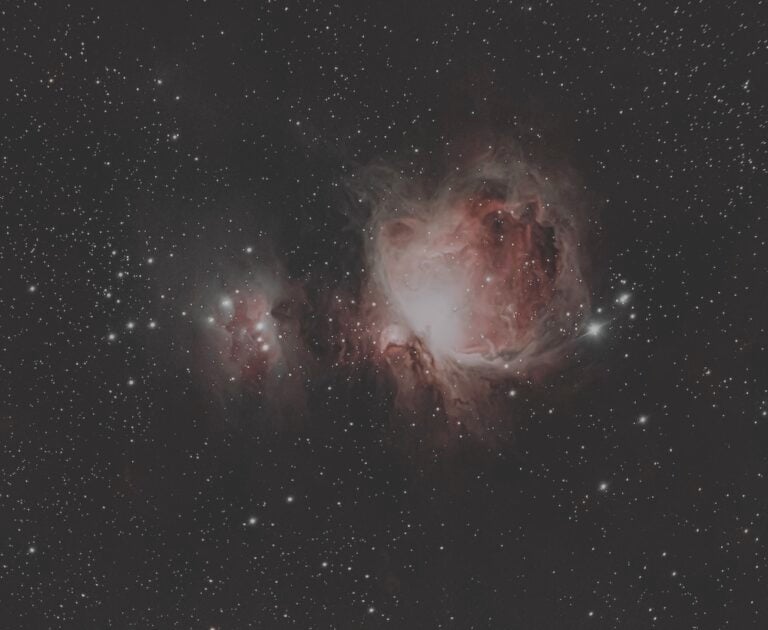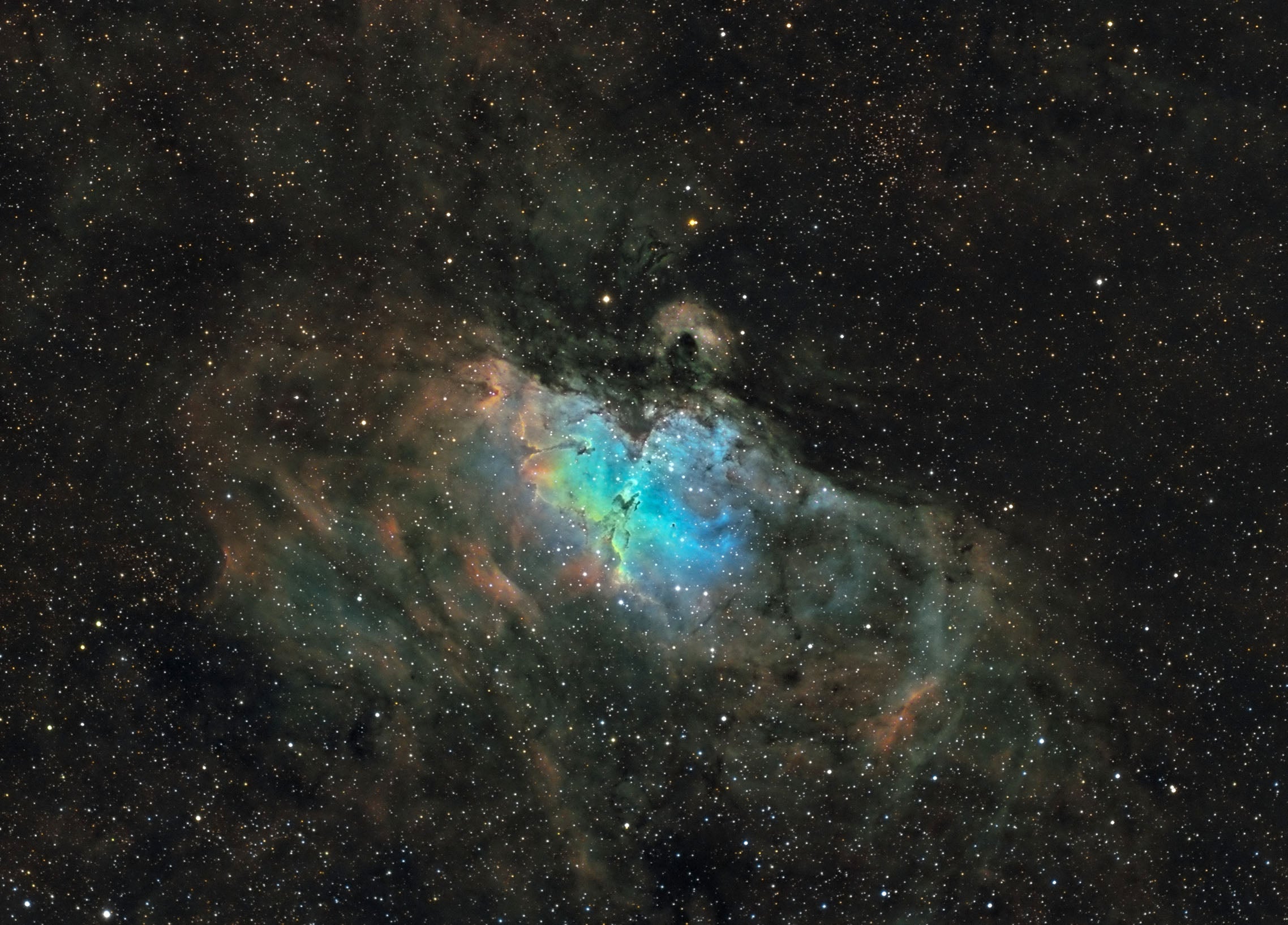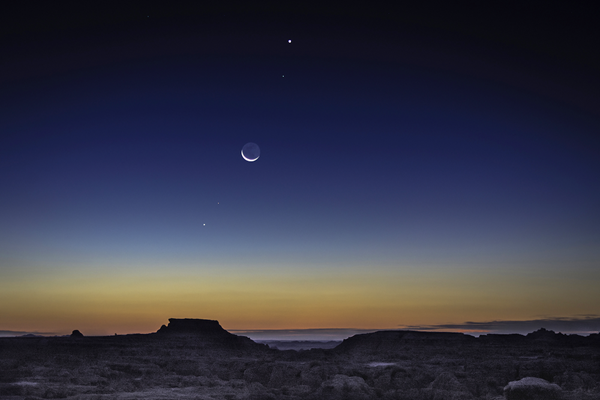While viewing through your binoculars, hop northeastward along a series of wonderful deep-sky targets. You’ll pass a gallery of showpieces, including the Lagoon Nebula (M8) and the Trifid Nebula (M20).
By all means, pause at each, but then continue northeastward. Some 12° — about two binocular fields — beyond Alnasl, you’ll arrive at a large, denser region of the Milky Way measuring about three Moon diameters across. Charles Messier included this as the 24th entry in his famous catalog, noting its appearance in 1764 as “a large nebulosity in which there are many stars of different magnitudes.”
M24 was later christened the Small Sagittarius Star Cloud, but that is not accurate. M24 is not a single object. Nor is it a cloud of stars at all. Instead, this star-studded area is an open window into the depths of the Milky Way. Like other spiral galaxies, the plane of our Milky Way is heavily polluted with interstellar matter, including vast clouds of opaque dust. That’s why studying the center of our galaxy is so challenging. There is just too much local interference — except toward M24. There, the dust is thin enough that we can peer through our local arm to a depth of about 16,000 light-years, all the way to the Carina-Sagittarius arm, halfway between us and the inner Norma arm.
Somewhere along the way, M24 went “missing.” At least, that’s how some 20th-century references termed it. That’s probably because those authors were looking through the narrow fields of their telescopes, which couldn’t take in the full breadth of the area and thus missed M24. Others said that M24 must be one and the same as NGC 6603, a densely packed open cluster superimposed on the northeastern quadrant of M24. But NGC 6603 shines faintly at 11th magnitude and measures only 4′. Compare that to Messier’s original description and it’s obvious that they are not the same object, though many past sources insisted they were.
While M24 stands out nicely through binoculars, NGC 6603 is challenging due to its dimness, compounded by its unfortunate position in front of the “star cloud’s” brightest region. Estimates place as many as 100 individual stars within, although with none brighter than 14th magnitude, they are far too faint to resolve through even giant binoculars. Instead, their light blends to form a softly glowing smudge against a rich backdrop. Look for it just north of an equilateral triangle of 7th-magnitude stars. By waiting for that special night under a clear, dark sky free from moonlight, artificial light pollution, and summer haze, you just might see something that Messier missed.
There are several isolated patches of dark nebulosity silhouetted in front of M24. The most obvious is cataloged as Barnard 92 in Edward Barnard’s “On the Dark Markings of the Sky, With a Catalogue of 182 Such Objects,” published in The Astrophysical Journal’s January 1919 edition. Barnard’s one-line description portrayed it as a “Black spot, 15′ north and south, 9′ east and west.” That likely led to its nickname, the Black Hole, coined long before the expression was applied to the end result of the most massive stars when they detonate as supernovae.
Barnard’s black spot may be glimpsed with 35- and 50mm binoculars, growing more obvious as magnification and aperture climb. It does indeed look like an oval “black hole” oriented north-south through my 16x70s, appearing about half as large as our Moon.
If you spot B92, try your luck with the next catalog entry, Barnard 93, about 1/3° east of B92. But be forewarned; it’s tougher. While B93 matches B92’s size north-to-south, it appears less than half as wide east-to-west. Unlike B92, which has sharp edges that clearly define it from the surroundings, B93 slowly diffuses outward into its environs. In photographs, it looks like the silhouette of a northward-facing comet with a denser “coma” and a fainter “tail” trailing southward.
Finally, as a postscript to the history of M24: While it is obviously not NGC 6603, it is in fact listed in the second supplemental Index Catalog published after the New General Catalogue. There, we find it cross-referenced as IC 4715 and described as a “most extremely large cloud of stars and nebulae.” That seems reasonable.

